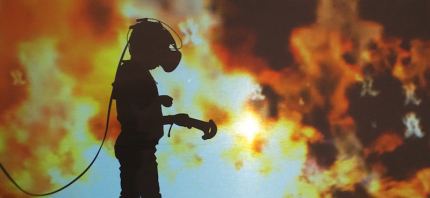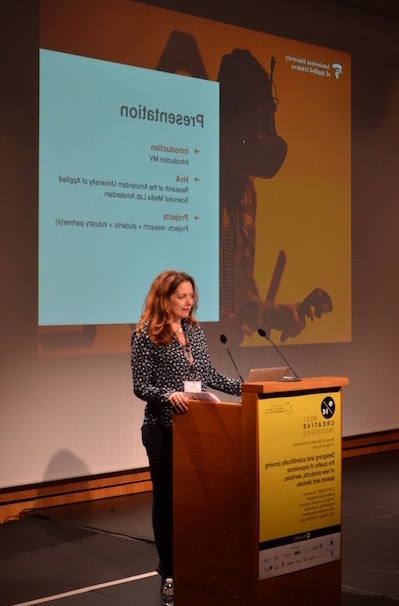Just like the works currently created by the film industry, in ten years’ time, augmented and virtual reality works will be shown in specialist cinemas, on Netflix-type online platforms, and in dedicated venues for more experimental forms of digital output. This prediction comes from Toinon Vigier, a senior lecturer at the Université de Nantes (LS2N laboratory).

But before we reach that stage, there is a long way to go to achieve optimum quality of experience for spectators. This quality can be analysed across four complimentary areas: the content, the system (broadcasting, reproduction, compression, etc), the context and the users themselves.
AR and VR are leading areas of experimentation at Ouest Industries Créatives, which supports a number of research projects and manages a cycle of scientific events on this theme.
With the support of the Pays de la Loire and Nantes Métropole authorities, the Research-Education-Innovation hub jointly organised and funded a workshop – AR and VR Meet Creative Industries, held on October 13 as part of the IEEE ISMAR conference. This international symposium at the Cité des Congrès was coordinated by the Ecole Centrale de Nantes and INRIA and sponsored by a number of partners, including Ouest Industries Créatives.
Toinon Vigier, Jacques Gilbert (AMO, Université de Nantes) and Carola Moujan (Ecole Supérieure des Beaux-Arts Tours Angers Le Mans) presented a broad and exciting vision of the projects and questions sparked by these new experiences, combining both artistic and technological points of view.

Mirjam Vosmeer, Amsterdam University of Applied Sciences – @Université de Nantes / OIC
The workshop programme:
- Three facilitators (Mirjam Vosmeer from the University of Amsterdam, Philippe Guillotel from Technicolor and Hokyoung Ryu from Hanyang University, South Korea)
- Three presentations (Jan Ondrej,Trinity College Dublin, Lily Diaz, Aalto University Finland and Laurent Lescop, Ecole d’Architecture de Nantes),
- One display from students at the Polytech de Nantes in partnership with Anne Dubos (IEA).
How can we create transitions in time and space in a 360° plane, or efficiently manage spectator viewpoints and movements in a work?
What can we learn from an historical analysis of panoramas in art in order to develop a new narrative grammar?
How can we recreate a Rembrandt painting, show the Grotte de Chauvet or adapt a Beckett play in VR?
Student project Polytech / Rock Art Rocks Me, Laval Virtual 2017 * – @Pierre Le Chanu
Virtual reality adaptation of a S. Beckett play / Chaire V-SENSE, Trinity College (Dublin) – @V-SENSE
This interdisciplinary and international line-up, covering media, communication, art, design, architecture, psychology, and technology, showcased a wealth of potential for works and engaged reflection on virtual and augmented reality. With its remit of monitoring, of coordinating a network and of organising influential events in the Pays de Loire region, RFI Ouest Industries Créatives intends to support these promising meetings of minds.
___________________________________________________________________________________________________
*Students from Polytech de Nantes: Mathilde Colondon, Alexis Duhamel, Pierre Le Chanu, Sarah Mallet, Lisa Izzouzi and Wei Zhao.
Polytech supervisors: Patrick Le Callet and Toinon Vigier.
Artistic project by Anne Dobos (Little Heart Movement trans-media company), funded by Stereolux.

